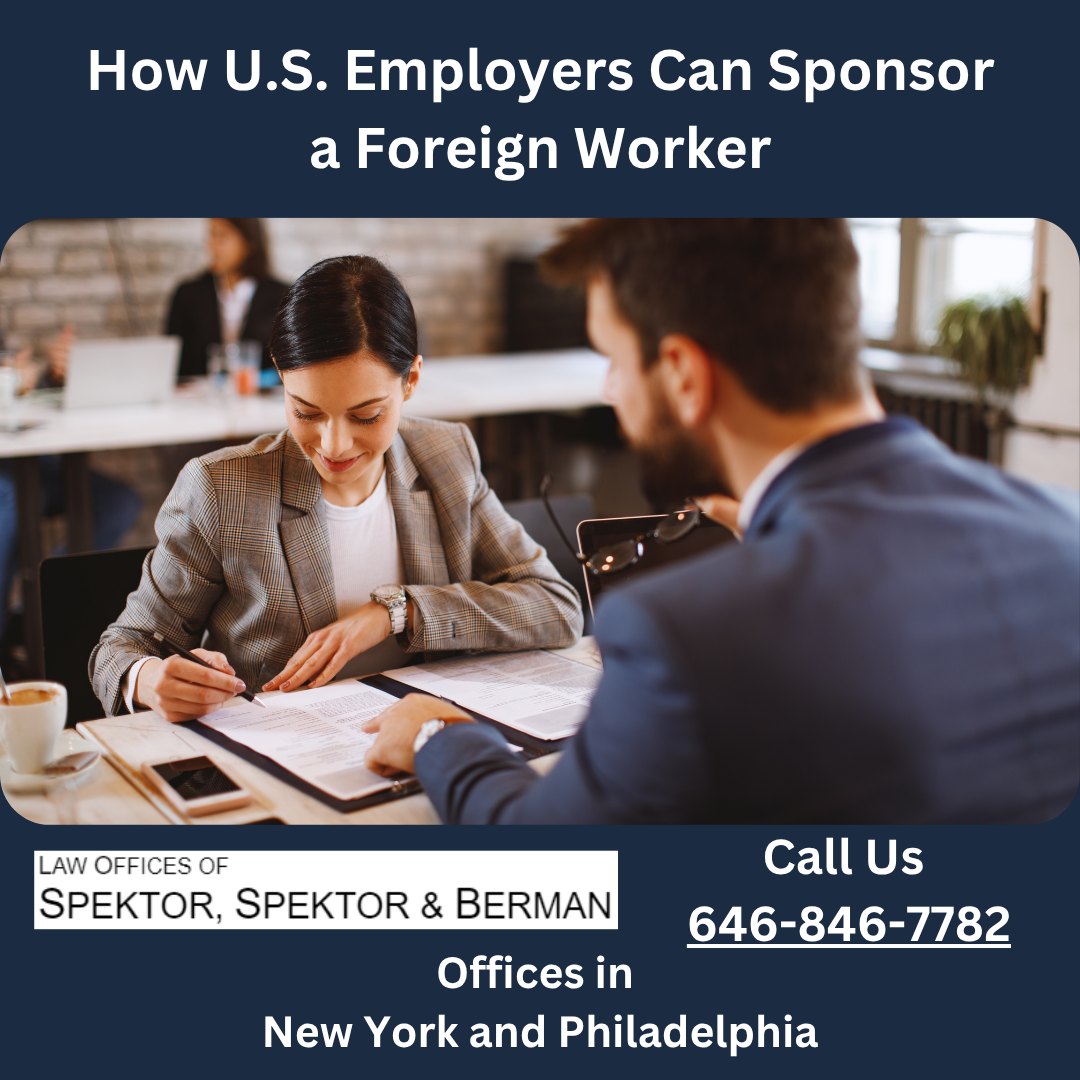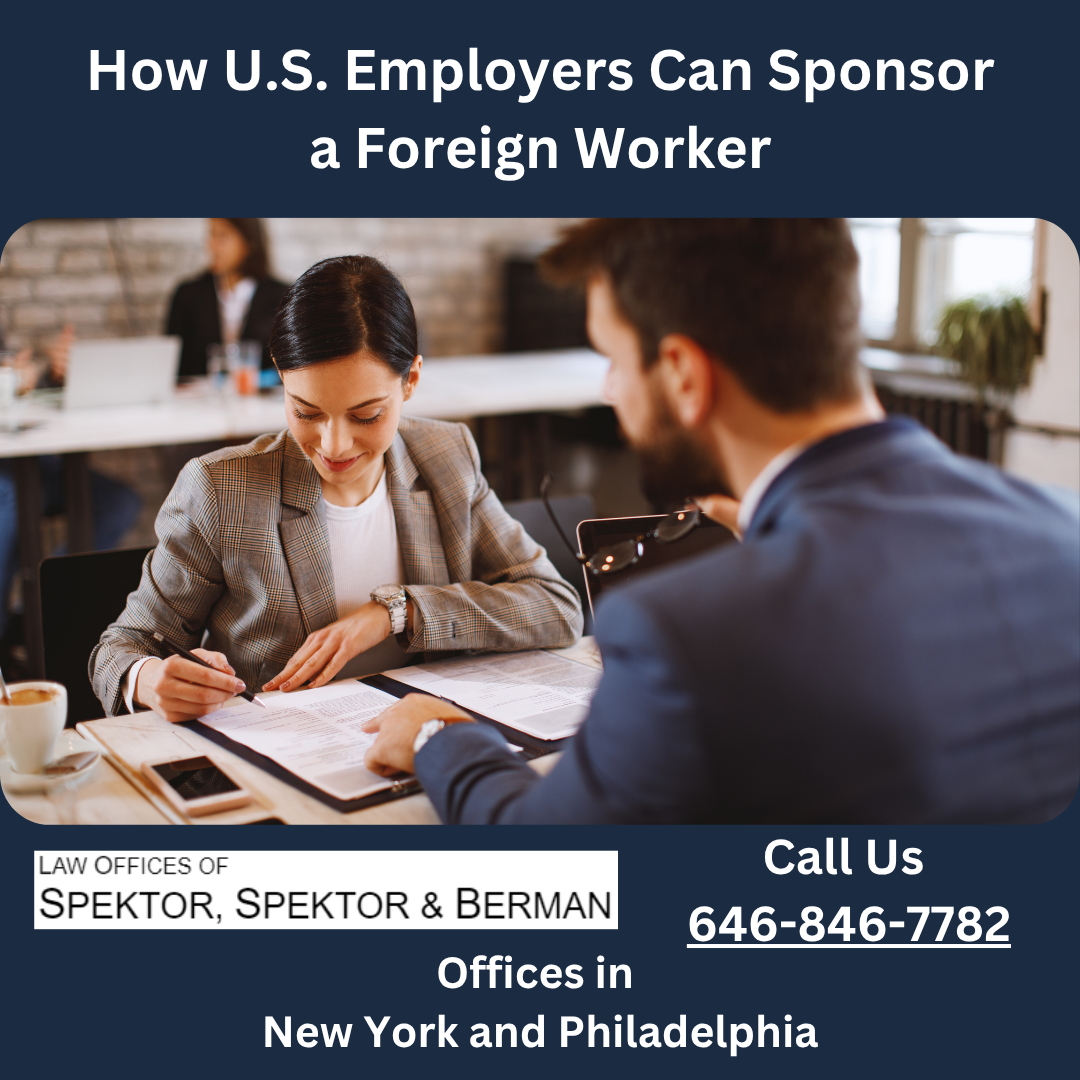Hiring foreign talent is often a smart move for companies that need specialized skills or want to stay competitive in a global market. However, bringing a worker from another country to the United States involves legal steps. U.S. employers who want to sponsor a work visa must follow federal rules and file the right paperwork. This article explains how the process works and what employers need to keep in mind.

What It Means to Sponsor a Work Visa
When an employer decides to sponsor a foreign worker, they are requesting that the U.S. government permit that person to enter the country for a specific job. This sponsorship often requires the employer to file forms, pay fees, and adhere to strict guidelines to ensure the hire is legal.
Who Can Sponsor a Work Visa?
To sponsor a work visa, a business must be legally registered in the U.S. and have a Federal Employer Identification Number (FEIN). The employer also needs to show they can afford to pay the worker the standard wage for the job. This is known as the prevailing wage, and it helps ensure that foreign hires are treated fairly and don’t undercut local wages.
Employers must also follow immigration laws throughout the process. This includes keeping records and reporting any major changes in the worker’s job.
Common Types of Work Visas
There are different types of work visas based on the kind of job and the background of the employee:
H-1B Visa: For jobs that require a degree or special training. These are common in the tech, engineering, and finance industries. The H-1B program has an annual limit and usually involves a lottery.
L-1 Visa: For employees moving from a company’s office abroad to a location in the U.S. The employee must have been employed by the company for at least one year.
O-1 Visa: For people with proven talent in areas like science, arts, education, or sports.
H-2B Visa: For short-term, non-agricultural jobs. This can apply to landscaping, hospitality, and construction.
EB-3 Visa: For skilled and unskilled workers who want permanent residence through employment.
Steps to Sponsor a Foreign Worker
1. Pick the Right Visa
The first step is to decide which type of visa best suits the job and the worker’s qualifications.
2. Get Labor Certification (if required)
Some visas, such as the H-1B, require a Labor Condition Application (LCA) from the U.S. Department of Labor. This step confirms that the job meets wage and workplace standards.
3. File the Petition
Employers submit a Petition for a Nonimmigrant Worker to U.S. Citizenship and Immigration Services (USCIS). This form gives details about the job and the employee.
4. Wait for Approval
USCIS reviews the petition and may request additional documents. This stage can take weeks or even months unless premium processing is used.
5. Employee Applies for a Visa
If USCIS approves the petition, the worker applies for a visa at a U.S. consulate or embassy in their country.
6. Prepare for Arrival and Employment
Once the visa is issued, the worker can enter the U.S. The employer must assist in completing paperwork, such as Employment Eligibility Verification, and maintain accurate employment records.
How Much Does Sponsorship Cost?
There are a few fees involved when an employer chooses to sponsor a work visa:
Filing fees for USCIS forms
Anti-fraud and training fees for H-1B visas
Optional premium processing fees for faster results
Legal or administrative costs if using an immigration lawyer
Some employers also offer help with moving expenses, though this is not required.
Ongoing Responsibilities
Sponsoring doesn’t end when the employee arrives. Employers have continuing duties, such as:
Keeping a public file showing compliance with wage and job conditions
Paying the agreed wage and sticking to the job description
Reporting major changes to USCIS, like job location or early termination
Bringing Talent to the U.S. the Right Way
Hiring international workers can fill important gaps and add valuable skills to a team. But to sponsor a work visa, U.S. employers must follow the rules closely. Picking the right visa type, filing forms properly, and meeting all requirements are key to a smooth process.
Employers who want to bring in foreign workers should consider speaking with an immigration lawyer. With the right help and planning, companies can bring in top talent while staying in line with U.S. law.




